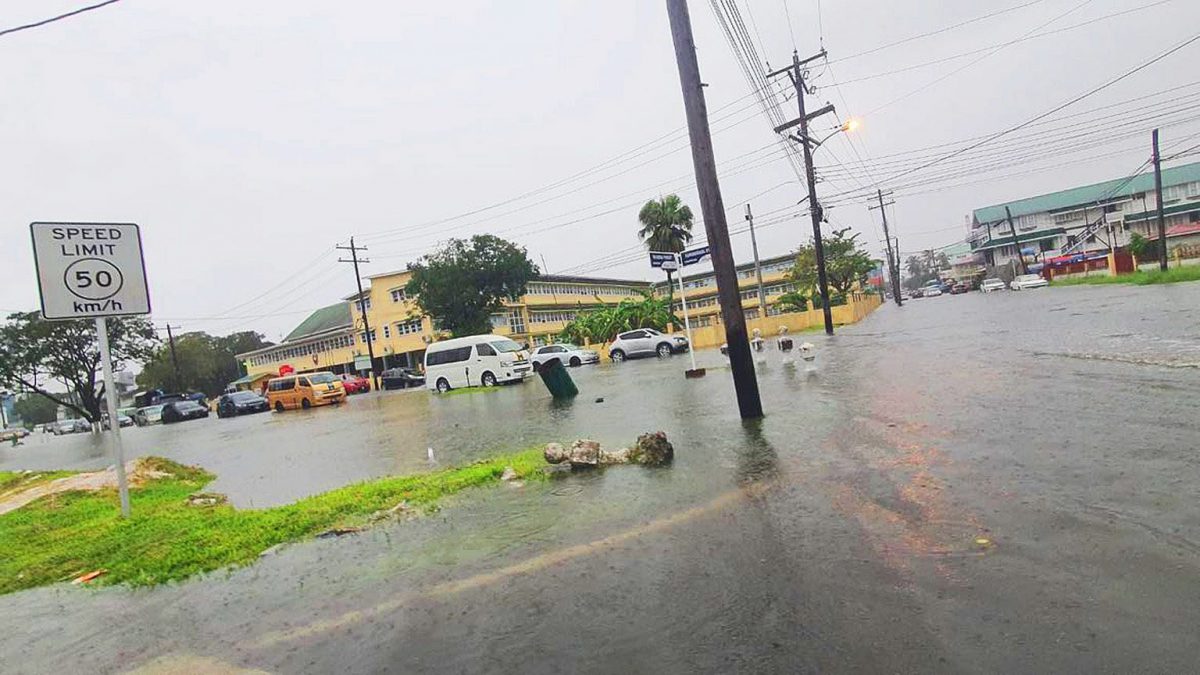Already confronted with food security challenges which, since earlier this year, had compelled the Caribbean to move in the direction of establishing a regional food terminal designed to respond to ‘worst-case’ scenarios, particularly in the least food-secure countries in the region, Caribbean Community countries have just been served notice of the likelihood that their circumstances are likely to get worse before they get better.
This week the Barbados-based Caribbean Institute for Meteorology and Hydrology (CIMH) issued yet another blunt warning that the heavy rains which have already been impacting on the agriculture sectors and other aspects of normal life across the region are likely to persist through December, posing a risk of flooding and likely creating food availability challenges on top of those already facing some countries in the region.
With some CARICOM countries having already been forced to look for options to their own agriculture sectors in the face of high rainfall levels that have persisted over the past few weeks, the CIMH is saying nothing that points to a letup in the region-wide downpours for at least the next few weeks. The regional climate body is pulling no punches, with its climatologist, Cédric Van Meerbeeck quoted as saying that “this year’s flooding is a bigger risk in December than in other years.”
Erratic year-end weather patterns have now become the bane of the existence of Caribbean territories with the already climate-vulnerable smaller island territories becoming increasingly vulnerable to seasonal weather-related disasters which, in some instances, have included loss of life and widespread property destruction. This year, the new flood warnings have come on the back of earlier warnings in the smaller territories of the region of food security challenges that are now likely to become more acute in the period ahead.
Trinidad and Tobago, not known to be the most climate vulnerable country in the region, reported some weeks ago that incessant rains had forced some of the country’s farmers to surrender in the battle against nature and ‘walk away’ from their farms until the rains subside.
With the Caribbean now looking to a proposed regional food terminal administered largely by Barbados and heavily dependent on agricultural produce from Guyana, concerns that the recent advent of country-wide seasonal rainfall that customarily wreaks havoc with the agricultural sector here could impact negatively on the timing of the rolling out of the terminal would appear to be growing.
While the Caribbean has, by now, become painfully aware of the regional weather pattern and its impact on normal life, not least, food security, its limited emergency response capabilities have meant that not a great deal can be done at the level of regional governments beyond urgings that communities in likely affected areas take “the necessary precautions.” Those “precautions,” however, frequently count for little in terms of either mitigating flood damage to homes and community infrastructure or devastating farmlands, resulting in extensive loss of agricultural produce.
Here in Guyana it is the hinterland communities, which, on account of particularly fragile physical infrastructure, that are most vulnerable to flood-related devastation, in which circumstance the now rhetorical official urgings to affected communities to “take precautions” have become near pointless.
Given what, over time, has been a weak disaster response infrastructure, flooding in the interior regions usually have a life-changing impact on residents in terms of loss of property and life, as well as immediate-term food security challenges that leave the authorities powerless to provide timely responses.
Earlier this month both Prime Minister Mark Phillips, under whose portfolio disaster risk management falls and army officer Nazrul Hussein, who heads the country’s Civil Defence Commission, issued the routine official response centred on ‘taking precautions’ though, in the face of what, frequently, is the ferocity of the rainfall and attendant flooding, on the one hand and the country’s weak flood response infrastructure on the other, there are no short cuts to mitigation.








